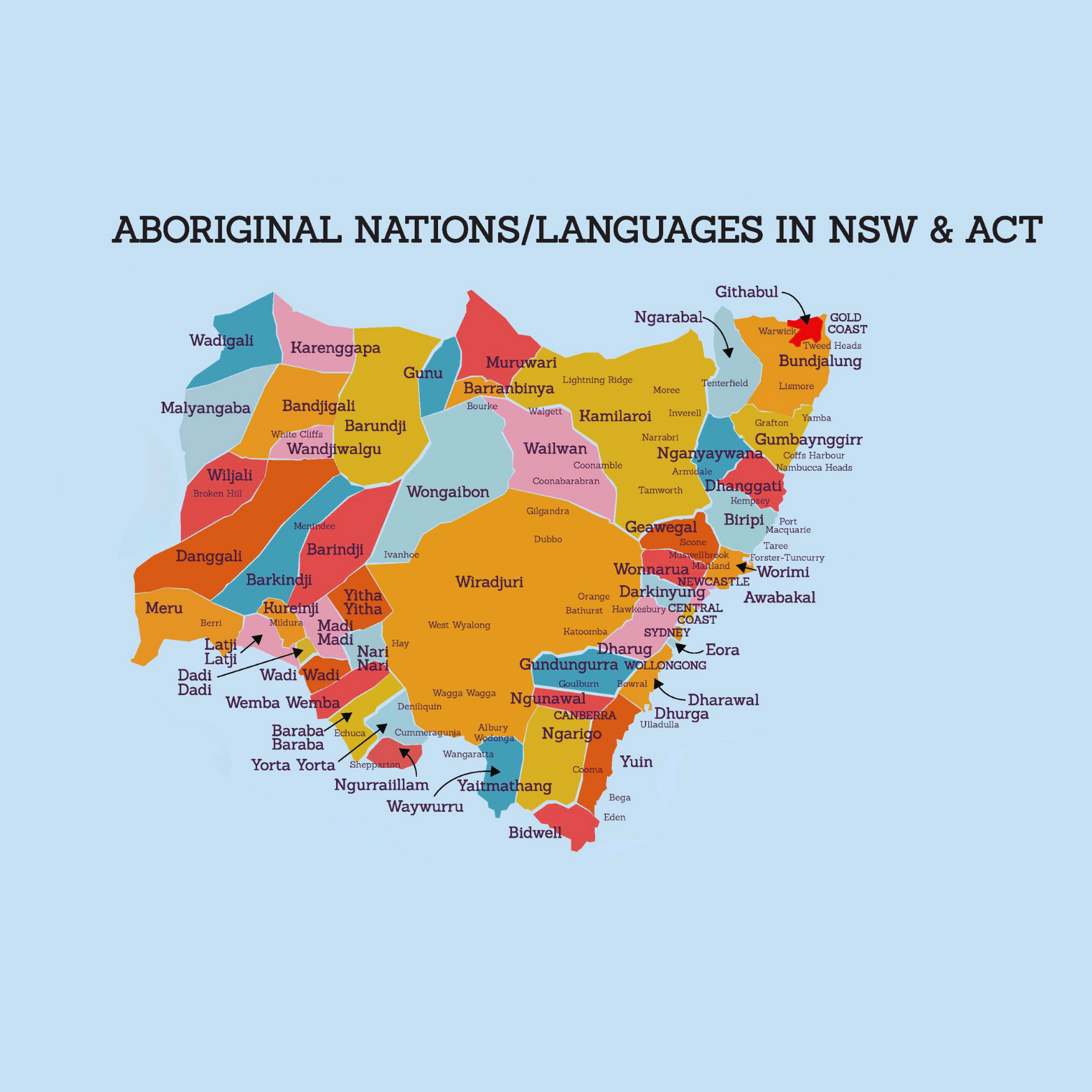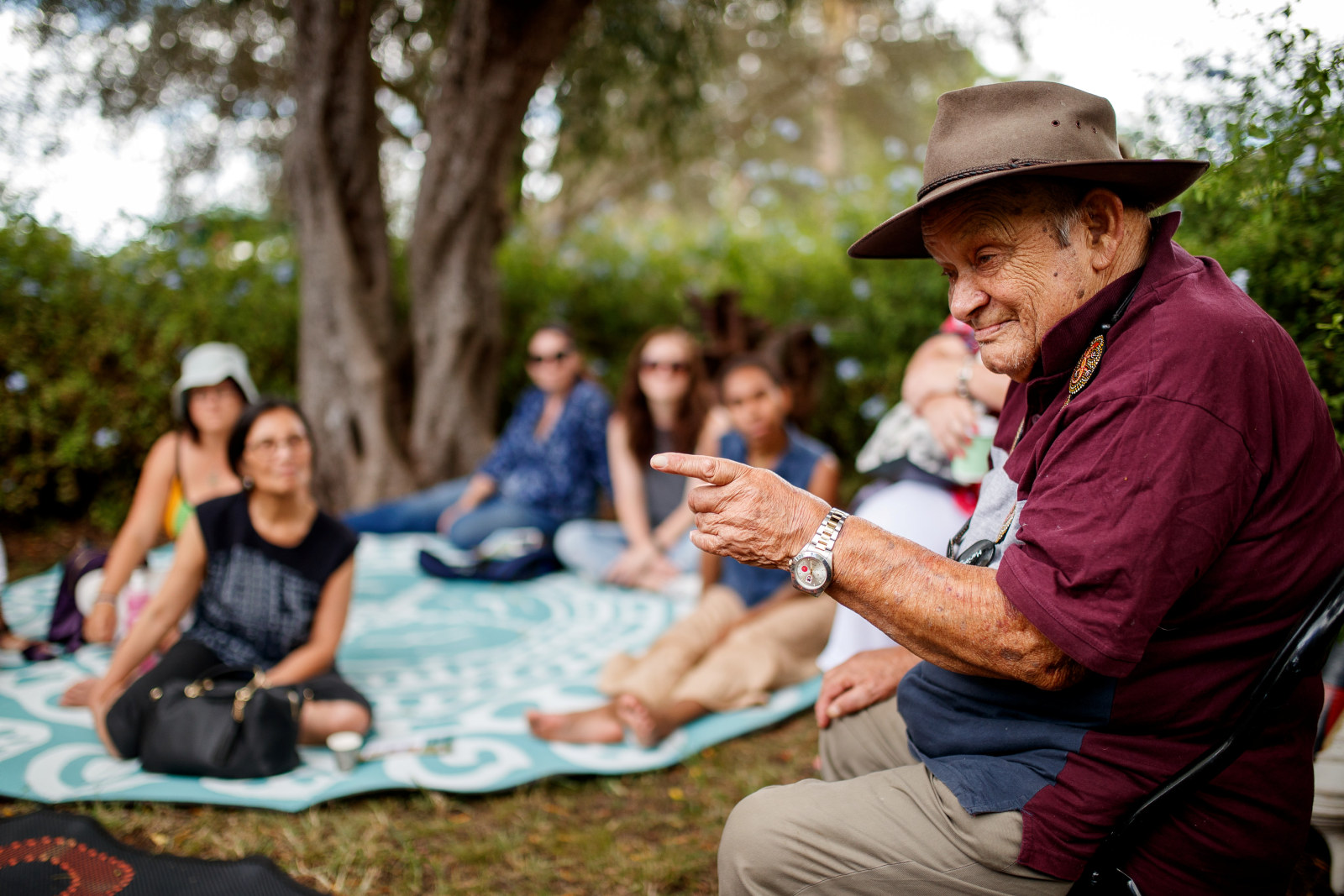Aboriginal resources: chronology of significant events
This chronology gives an overview of significant events which have happened in Australia from 1788 to 1998, concentrating on the relations between Aboriginal people and the post-1788 immigrants.
Other events are shown in order to give an historical context. Some of these events generated many records whereas other records are the result of legislative changes. Please note that all institutions and legislation are from New South Wales, unless otherwise noted.
Chronology
Pre-1788
Aboriginal people lived in Australia for many tens of thousands of years in a large number of tribal and language groupings. It has been estimated that there were about 600 Aboriginal tribes in Australia in 1788.
1788
Arrival of the First Fleet and first conflict between the newcomers and the original inhabitants
1788-1802
Pemulwuy leads a guerilla war against the British settlement
1815
Governor Macquarie founds the Native Institution as a school for Aboriginal children of both sexes
1816
Governor Macquarie institutes an annual meeting of tribes with feasting and the distribution of blankets
1824
First Legislative Council of New South Wales is constituted
1826
Missionary activity is subsidised. London Missionary Society and the Reverend L. E. Threlkeld at Lake Macquarie
1834
John Batman signs a treaty with the Aboriginal people of Port Phillip. The Government disallows the treaty on the grounds that the land belonged to the Crown
1838
Fiftieth Anniversary of the arrival of the First Fleet
Bill for the Protection of Aborigines is drafted
Port Phillip Aborigines Protectorate is instituted
Waterloo Creek Massacre
Myall Creek Massacre
1839
An Act to allow the Aboriginal Natives of New South Wales to be received as competent Witnesses in Criminal Cases (30¼ Vic. No. 16)
1840
An Act to prohibit the Aboriginal Natives of New South Wales from having Fire Arms or Ammunition in their possession without the permission of a Magistrate (4¼ Vic. No. 8)
1842
Native Police is formed
1843
The Legislative Council is reconstituted to include elected members
1849
Port Phillip Aborigines Protectorate is abolished
1856
Responsible Government is instituted in New South Wales with the establishment of the elected Legislative Assembly
1858
Secret ballot is introduced in New South Wales
1867
An Act to prohibit the supply of Intoxicating Liquors to the Aboriginal Natives of New South Wales (31¼ Vic. No. 16)
1880
Association for the Protection of Aborigines is formed
1881
State Children's Relief Board is established giving the Government specific powers over children of any race
Government appoints a Protector of Aborigines (George Thornton MLC)
1883
Board for the Protection of Aborigines is created by the Government
1892
Aborigines Protection Association turns over the management of the Mission Stations to the Board (Cumeragunja, Warangesda, Maloga and Brewarrina)
1893
A Girls' Dormitory is set up at Warangesda Station
1901
Commonwealth of Australia is established
1902
Women in New South Wales are granted the right to vote (excluding Aboriginal women)
1909
Aborigines Protection Act 1909 (No. 25) reconstitutes the Aborigines Protection Board. The Inspector-General of Police is now the Chairman.
1911
Cootamundra Girls' Home opens
1914
Beginning of First World War. Approximately 400 to 500 Aboriginal people serve as enlisted soldiers. Aboriginal children continue to be removed from their families during the period 1914 to 1918, including children whose fathers are overseas at the War.
1915
Aborigines Protection Amending Act 1915 (No. 2) gives the Board the right to assume control of an Aboriginal child
1918
Commonwealth Electoral Act 1918 (No. 27) excludes Aboriginal people from being on the electoral roll or voting
1918
Aborigines Protection (Amendment) Act 1918 (No. 7)
1924
Kinchela Boys Home at Kempsey opens
Australian Aboriginal Progressive Association (AAPA) is formed
1927
Australian Aboriginal Progressive Association (AAPA) delivers a petition on Aboriginal concerns to the Premier
1929
Compulsory voting is introduced in New South Wales. Aboriginal people are still excluded from voting under the Commonwealth Electoral Act 1918 (No. 27).
1934
Australian Aboriginal League (AAL) is formed
1936
Aborigines Protection (Amendment) Act 1936 (No. 32) gives additional wide powers to the Board
1937
Aborigines Progressive Association (APA) is formed
The Legislative Assembly of the Parliament of New South Wales sets up a Select Committee on the Aborigines Protection Board
1938
Sesquicentenary of the arrival of the First Fleet
Day of Mourning and Protest
Committee for Aboriginal Citizens Rights is formed
Australian Abo Call: the voice of the Aborigine, the journal of the Aborigines Progressive Association (APA), is published from April
Public Service Board begins an Inquiry into the Aborigines Protection Board
1939
Beginning of Second World War. An estimated 3000 Aboriginal people and Islanders serve as formally enlisted soldiers, sailors or airmen. Aboriginal children continue to be removed from their families during the period 1939 to 1945, including children whose fathers are overseas at the War.
1940
Aborigines Protection (Amendment) Act 1940 (No. 12) reconstitutes the Aborigines Protection Board as the Aborigines Welfare Board. The Under Secretary of the Colonial Secretary’s Department is now the Chairman.
1941
Commonwealth Government extends child endowment benefits to all Aboriginal people who are not nomadic or supported by the Commonwealth or a State
1943
Aborigines Protection (Amendment) Act 1943 (No. 13) provides for the appointment of two Aboriginal people to the Board
1948
Under the Commonwealth Nationality and Citizenship Act 1948 (No. 83) all Aborigines are now British subjects and Australian citizens
1951
Commonwealth Government calls a Native Welfare Conference with the States (Victoria and Tasmania do not attend). The Conference endorses the principle of assimilation.
1953
The Senate of the Commonwealth Parliament sets up a Select Committee on Aboriginal Voting Rights
1956
Aboriginal-Australian Fellowship (AAF) is formed
1957
Meeting organised by the Aboriginal Australian Fellowship at Sydney Town Hall launches campaign for a referendum to change the Australian constitution
1958
Victorian Aboriginal Advancement League (VAAL) is formed
1958
Federal Council for Aboriginal Advancement (FCAA) is formed
1960
Aboriginal-Australian Fellowship (AAF) calls for full citizenship rights
1962
Commonwealth Electoral Act is amended so that all Aboriginal people may vote
1963
Aborigines Protection (Amendment) Act 1963 (No. 7)
1964
Federal Council for Aboriginal Advancement (FCAA) changes its name to the Federal Council for the Advancement of Aborigines and Torres Strait Islanders (FCAATSI)
1965
Commonwealth - State Conference of Aboriginal Affairs Ministers endorses Assimilation Policy as national policy
1965
Freedom Rides throughout northern New South Wales
1965
The Parliament of New South Wales sets up a Joint Select Committee on Aborigines Welfare
1967
Commonwealth Referendum (27 May 1967) passes to change the Australian Constitution to remove the impediment to the Commonwealth Government making special laws with respect to Aboriginal people and to remove the impediments to counting Aboriginal people in the Census.
1969
Aborigines Act 1969 (No. 7) abolishes the Aborigines Welfare Board. All Aboriginal children under the care of the Board now become Wards of the State.
1969
Directorate of Aboriginal Welfare is set up in the Department of Child Welfare and Social Welfare
1971
Aboriginal Flag is designed by Luritja artist Harold Thomas and flown for the first time in Adelaide
1971
Commonwealth Government sets up the Ministry for Environment, Aborigines, and the Arts
1971
Neville Bonner becomes the first Aboriginal Member of the Commonwealth Parliament as a Senator from Queensland
1972
Aboriginal Tent Embassy is set up on the lawns in front of Parliament House in Canberra
1972
New Labor Commonwealth Government sets up the first separate Ministry and Department of Aboriginal Affairs
1973
Aborigines (Amendment) Act 1973 (No. 35)
1973
An Aboriginal-elected National Aboriginal Conference is established to advise the Commonwealth Government on Aboriginal affairs
1973
Commonwealth Government announces the Self Determination Policy for Aboriginal affairs
1975
Commonwealth Government takes over the functions of the New South Wales State Directorate of Aboriginal Welfare
1975
Aboriginal Services Branch is created in the Department of Youth and Community Services
1975
Title to Missions and Reserves in New South Wales is handed over to the Aboriginal Lands Trust
1976
Aboriginal Health Unit of the Department of Health is set up
1978
The Legislative Assembly of the Parliament of New South Wales sets up a Select Committee on Aborigines
1980
Link-Up (NSW) - an Aboriginal organisation formed to reunite and support Aboriginal people removed from their families - is established
1981
Aboriginal Advisory Board to the Housing Commission is established
1982
Ministry of Aboriginal Affairs (New South Wales) is established
1983
Aboriginal Land Rights Act 1983 (No. 42) revokes any dedication or reservation under the Crown Lands Consolidation Act 1913 or the Western Lands Act 1901 pursuant to transfers of land to an Aboriginal Land Council
1987
Commonwealth Government sets up the Royal Commission into Aboriginal Deaths in Custody
1988
Bicentenary of the arrival of the First Fleet
Office of Aboriginal Affairs established in the Premier’s Department
1990
Aboriginal Land Rights (Revival of Financial Provision) Act 1990 (No. 32)
1991
Royal Commission into Aboriginal Deaths in Custody reports
1992
“Mabo” decision of the High Court recognises the concept of native title and overturns the doctrine of terra nullius (the notion that Australia was empty and owned by nobody until British settlement)
1993
Ministry of Aboriginal Affairs is re-established. It oversees the Office of Aboriginal Affairs and the NSW Aboriginal Land Council.
Commonwealth Native Title Act 1993 (No. 110)
1994
Native Title (New South Wales) Act 1994 (No. 45)
1995
Office of Aboriginal Affairs is abolished and the Department of Aboriginal Affairs is established
Aboriginal Land Rights Amendment Act 1995 (No. 39)
National Inquiry into the Separation of Aboriginal and Torres Strait Islander Children from Their Families commences
1996
“Wik” decision of the High Court - leases granted by the Crown do not extinguish Aboriginal land rights
1997
Bringing Them Home: Report of the National Inquiry into the Separation of Aboriginal and Torres Strait Islander Children from Their Families
National Parks and Wildlife Amendment (Aboriginal Ownership) Act 1996 (No. 142) comes into effect, amending the Aboriginal Land Rights Act 1983. It establishes a Register of Aboriginal Owners by the Registrar, Aboriginal Land Rights Act.
Related

First Nations Community Access to Archives
This project aims to improve access for First Nations people to important archival material about culture, kinship, stories, and languages within the State Archives Collection
19th Century Aboriginal population records
Aboriginal and Torres Strait Islander people are respectfully advised that our collection may contain images or names of deceased people in photographs or text. We acknowledge that language in the records referring to Aboriginal people may be confronting and in some instances would be considered offensive if used today.
Aboriginal resources: an overview of records
A brief overview of the State archives that document the NSW government's interaction with Aboriginal people from 1788 until today
